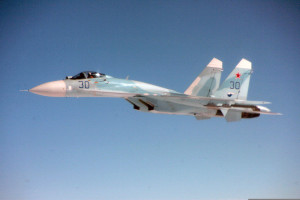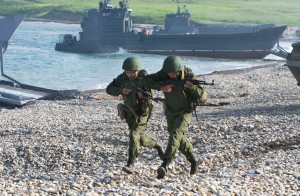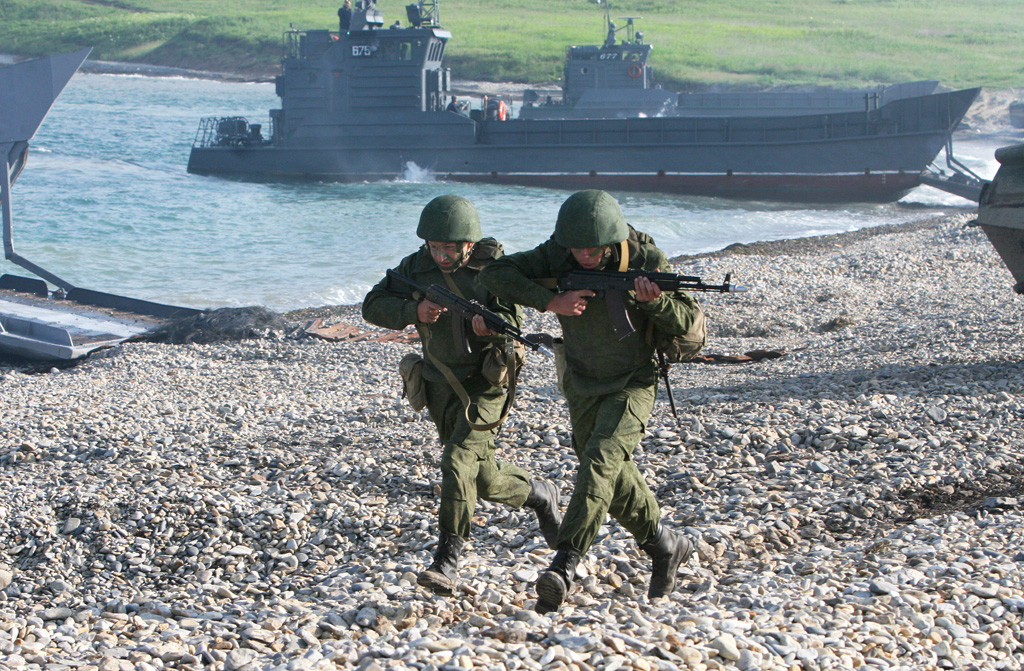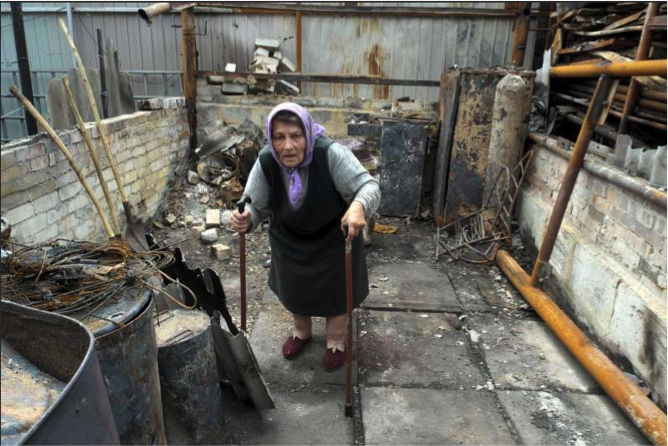Much attention has been devoted in Western media to the Russian Federation’s aggression in Ukraine. But Russia’s increased military presence on another potential flashpoint – the Pacific – has largely escaped notice. In June 2014, the Russian Navy was excluded for the first time from participating in RIMPAC, the world’s largest maritime exercise. But the Russian military is getting plenty of practice with large-scale operations in the region. Though a joint exercise between Chinese and Russian maritime forces in May 2014 afforded Russia some semblance of multilateralism, the scale of its own unilateral Pacific exercises this year has been staggering.

In August 2014, tensions rose between Russia and Japan when the former held exercises on islands disputed by the two countries. The status of these islands, referred to as the Northern Territories by Japan and the Southern Kuril Islands by Russia, became a source of source of geopolitical jockeying when the Soviet Union occupied them along with the southern half of Sakhalin Island in the final days of the Second World War. In order to strengthen its claim over these islands and their surrounding waters, Russia deployed over 1,000 troops, five attack helicopters, and other military hardware for a week of manoeuvres.
But that exercise pales in comparison to Vostok 2014, which was held from September 19-25, 2014. Involving 100,000 troops, 1,500 tanks, 120 aircraft, and approximately 70 ships, this was one of Russia’s most significant military drills since the collapse of the Soviet Union. President Vladimir Putin also called for a snap inspection the week prior to the exercise, testing the combat readiness of all branches of the Russian military. The simulated warfare took place in the Russian Far East, specifically Kamchatka, Chukotka, Sakhalin Island, and the Kuril Islands, where the only apparent threats to Russia could come from either China or Japan.
Vostok 2014 offers some insights into Russian defence priorities both in the Pacific and in general. Much emphasis was placed on testing tactical cruise missile launches and the potential to greatly expand Russia’s surface-to-air missile units. In this sense, one could say Russia is attempting to develop its own capabilities in ‘anti-access/area-denial’ (A2AD). This doctrine involves the use of various missiles and asymmetric warfare to deny a superior opponent, such as the United States, access to the sea and air, thus deterring an attack.
Just as interesting, however, is how Russia demonstrated that it is extending the reach of its forces. During the exercise, 16 Mi-8AMTSh helicopters carried troops from the Kuril Islands to an airfield in Kamchatka, a flight of more than 1,300 kilometres over the sea, lasting approximately six hours. This record-breaking flight was made possible by the installation of additional fuel tanks on these helicopters, which could be replicated in the future. This certainly indicates that Russia is interested in extending its power projection in the region. After all, if the helicopters can transport troops from the Kurils to Kamchatka, they can surely do so in the other direction as well if a conflict with Japan were to arise.

Given this posturing in the Pacific, there is renewed importance to the debate in Russia surrounding upcoming revisions to the country’s Military Doctrine. This document, issued approximately once every four years by presidential edict, identifies priority areas according to which the Russian military should be developed. In 2010, the doctrine approved by then President Dmitri Medvedev called for the adoption of tactics recently seen in the Ukrainian conflict, such as the use of special forces in conjunction with sympathetic local militias and the crucial role of information warfare during any future conflict.
Yuri Baluyevskiy, the former Chief of the General Staff, has revealed that he is a member of a working group currently drafting the new Military Doctrine and confided to the Russian press that the 2014 version will merely amend rather than overhaul the 2010 edition. But such amendments could include clarification on Russia’s relationship with NATO, its position on the ongoing Ukrainian conflict, and whether Russia is now seeking to pursue its own strategic pivot to Asia.
Russia’s increased involvement in the Pacific could drastically alter the balance in the region. In order to ensure that this engagement is constructive and East Asia remains on the path to ever-increasing prosperity, it may be necessary for countries in the region to discuss a robust system of information sharing. Such measures as base inspections and the exchange of information on the disposition of forces would reduce the likelihood of a large-scale exercise being misinterpreted as a precursor to invasion. This approach would be admittedly difficult, especially as Russia withdrew from just such an agreement in Europe prior to the 2008 war in Georgia. But with the stakes so high for all the countries of the Pacific, a coordinated diplomatic effort by small states and middle powers could secure a breakthrough.




